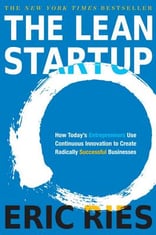Originally published on tech.mn on 2/9/23.
You don't need a boatload of chase to validate a product.
As an active Pre-Seed investor, I find myself in the following conversation at least five times per month. Here’s how it plays out:
- The founder(s) and I find time for a quick meeting.
- I ask them what they are working on, and they share their passion for solving Problem X.
- I ask them why they’ve decided to raise venture capital, and they explain how they need a few hundred thousand dollars to build an app to solve the problem.
At this point, instead of continuing the conversation into other pitch topics, I’ll switch gears from evaluator to coach.
The abrupt turnabout isn’t due to disinterest or skepticism. Nine out of 10 times it’s a result of the founder(s) skipping a critical step—validating key assumptions. It’s clear that they know the problem. They’ve even often architected a beautiful product mockup complete with a detailed list of features. Nice!
But do they know if this is business or a venture-scale business? Not yet.
Using the MVP Method (Effectively)
The Minimal Viable Product (MVP), made popular by “The Lean Startup”, was an incredibly practical methodology that helped a generation of early-stage entrepreneurs build less, validate more, and move through the product development process in a timely, cost-efficient manner. Sadly, the term has taken on other meanings and has become a bloated, expensive, slow-moving version of its former self.
There’s rationale to invest large sums of time and money into a digital product, but usually not for entrepreneurs just getting their business started.
I can understand the confusion. How do we know if people will pay us for this thing if they’re not able to buy a functioning version of it from us?
I love this part of the conversation because it’s the part where we get to dig deeper into the problem the founder is looking to solve. They may explain some large population of people who share similar needs or interests and go into how an app can be used to gather these people together to relay some sort of information that alleviates the problem. And, of course, all these people are willing and able to pay a small monthly fee to access the proposed network.
Let’s say this large population exists. How do we know you’re capable of capturing it?
Is this medium the best way for these people to find a solution? If yes, how much will they pay for it?
With the appropriate use of the MVP, it’s often possible to answer these questions on a shoestring budget without building a product.

The Health Tech Nerds Example
To show you how, here's an example of a thriving community I’ve had the luxury of observing for the last three years. I don’t have any inside information on the business. I’m a paying customer who was there early on.
If you’re into emerging trends in healthcare and digital health, you’ve likely heard of the Health Tech Nerds (HTN). Before the pithy name, the community started on the back of Kevin O’Leary who circulated a weekly email covering industry news along with his take on key innovations in healthcare. The email was high quality, thoughtful, consistent, and free.
After partnering with Ryan Russell, the two decided to test the assumption that subscribers of Kevin’s email may be interested in paying to access a curated community of emerging leaders in healthcare. Instead of building a custom environment to host its users, they sold an annual subscription to a private Slack channel (HTN).
Today, the channel has something like 4,000 subscribers, I assume most of whom are paying to be there. It’s active, it’s organized, it’s moderated, and it probably costs them a small annual hosting fee to run it. It’s great! You should join it.
They’ve proved a population exists, they’re capable of capturing it, Slack provides a solid foundation for enabling community, and people are willing to pay for it. If the HTN guys came to Groove asking for an investment it would be a very different conversation. And if that investment included costs related to building some custom software, we’d gladly encourage them to chat with our short list of trusted software development providers.
Validate Before the Dough
Bottom line? For early businesses, the MVP method doesn’t require a boatload of cash. And you’re heading out to raise that boatload of cash to solve a problem you don’t have an audience for yet, it’s worth slowing down and reevaluating. Hold on tight to your shoestring, work through the process of finding that audience, discover if your chosen medium is right, and, find out if there’s a model people will pay for.
The due diligence of validation always pays off.
